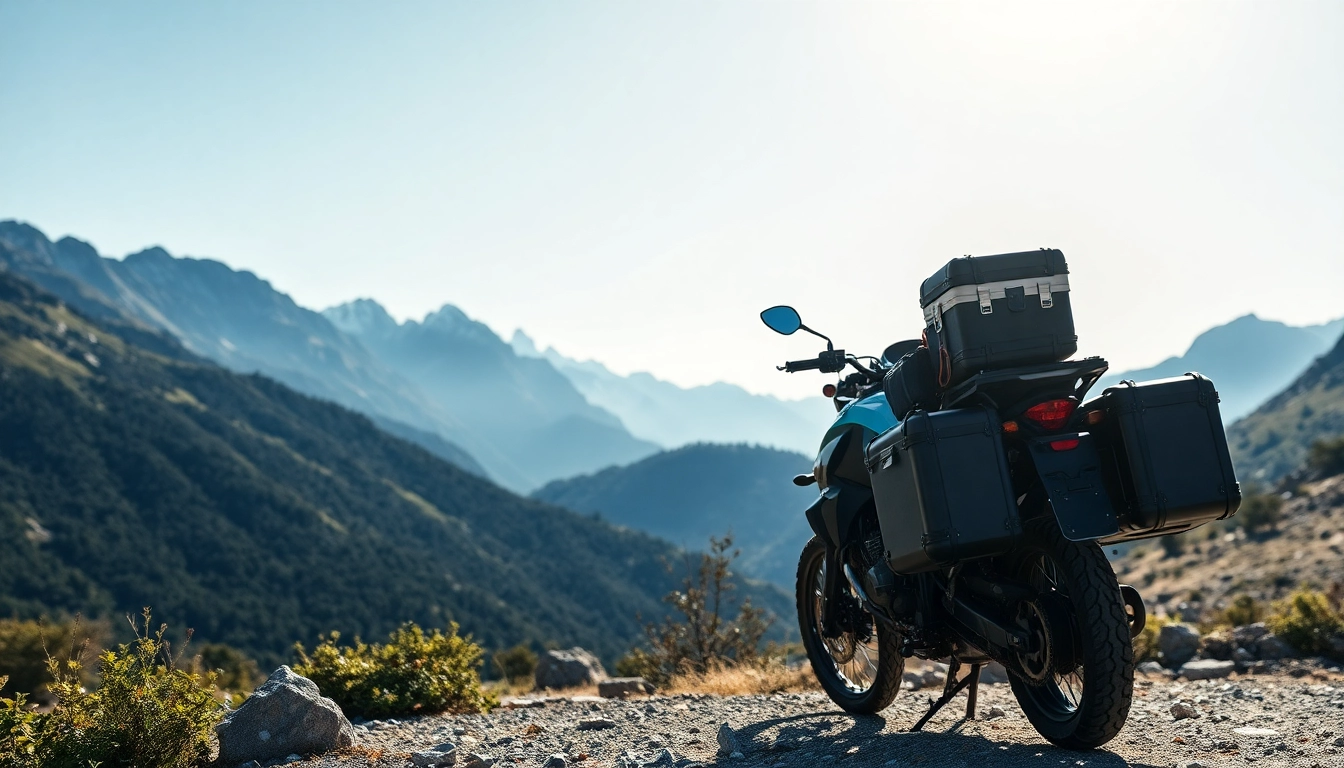Introduction to Gimbal for iPhone
In the realm of smartphone videography, achieving smooth, stable footage can often feel like a daunting challenge. For content creators eager to elevate their filmmaking game, utilizing a gimbal for iPhone is undeniably a game-changer. This detailed guide will explore the significance of gimbals, their benefits, the selection process, setup guidance, effective techniques, and editing strategies to help you create high-quality videos that stand out in a crowded digital landscape.
Understanding the Purpose and Benefits
A gimbal is a sophisticated stabilization device that helps eliminate unwanted camera shake, allowing you to capture smooth and cinematic footage. The primary purpose of using a gimbal for iPhone lies in its ability to control the camera’s orientation through advanced stabilization technologies. Here are several notable benefits:
- Smoother Shots: Gimbals counteract the physics of motion, thus producing fewer shaky frames and more professional-looking videos.
- Enhanced Creativity: By allowing fluid camera movements, gimbals enable dynamic shots, including pans, tilts, and tracking movements, enhancing storytelling capabilities.
- Easy Operation: Most gimbals come equipped with user-friendly interfaces and automated settings that make the filming process more straightforward for users of all skill levels.
- Versatile Use: Whether you’re shooting a short film, making social media content, or capturing family events, gimbals are designed to accommodate various scenarios.
How Gimbals Improve Video Quality
The quality of video captured with smartphones can greatly improve with the use of a gimbal. Stabilization helps maintain focus and clarity by preventing unwanted motion blurriness, which often plagues handheld shots. Moreover, well-stabilized footage can elevate viewer engagement due to its polished appearance, enhancing the overall visual storytelling. Additionally, employing a gimbal allows for versatile shooting angles and movement, adding depth and intrigue to your videos.
Different Types of Gimbals Available
Gimbals come in various forms, catering to different preferences and needs. Here’s a breakdown of the most common types:
- Handheld Gimbals: Designed for easy portability, these gimbals allow users to film while on the move, making them ideal for travel and outdoor events.
- Wearable Gimbals: These are compact and lightweight devices that can be strapped onto the body for hands-free operation, perfect for action shots.
- Multi-axis Gimbals: Typically offering 2 to 3 axes of stabilization, these gimbals provide effective motion control in several directions, suited for creative shots.
Choosing the Right Gimbal for iPhone
Selecting the ideal gimbal can significantly impact your shooting experience. When choosing a gimbal for iPhone, consider the following factors:
Key Features to Look For
Assessing the key features of gimbals can help you select the most effective option for your needs:
- Stabilization Technology: Look for gimbals offering advanced motors and gyro sensors that provide reliable stabilization, ensuring smooth footage.
- Battery Life: A longer battery life extends your shooting sessions without interruption, so choose models with robust power solutions.
- Weight and Portability: Ensure the gimbal is lightweight and easy to transport, especially if you plan on taking it on location.
- App Compatibility: Many gimbals have accompanying mobile applications that enhance functionality. Check for smartphone control options and creative shooting modes.
Budget Considerations for Gimbal Selection
Your budget will play a vital role in determining which gimbal you can afford. Prices can range from budget-friendly models to high-end professional options. While it may be tempting to opt for the cheapest option, striking a balance between affordability and functionality is key. Investing in a quality gimbal may save you money in the long run by delivering superior performance and durability.
Comparative Advantages of Various Models
Several models on the market offer distinct advantages depending on your needs:
- Compact Models: These are ideal for ease of use and transport, particularly suited for casual videographers or travelers.
- Pro Models: These often include professional features such as enhanced payload capacities, advanced tracking options, and superior build quality, making them perfect for serious filmmakers.
- Budget-Friendly Options: Although less feature-rich, these gimbals provide fundamental stabilization in a cost-effective package, suitable for beginners.
Setting Up Your Gimbal for iPhone
Once you’ve selected your gimbal for iPhone, the next step is to set it up correctly. A well-calibrated gimbal maximizes its stabilization capabilities and performance. Follow these steps:
Step-by-Step Setup Guide
- Start by unfolding the gimbal and ensuring it’s stable on a flat surface.
- Attach your iPhone securely, ensuring the phone is balanced in the gimbal’s cradle. This balance is crucial for effective stabilization.
- Power on the gimbal and allow it to calibrate. This usually involves the gimbal adjusting its motors to maintain alignment with your iPhone.
- Connect the gimbal to your iPhone via Bluetooth if required, following the manufacturer’s instructions.
- Download the relevant app if available, as this can provide additional functionalities such as different shooting modes and tutorials.
Calibrating Your Gimbal for Best Performance
After setup, ensuring proper calibration is vital for achieving optimal stabilization:
- Follow the instructions provided with your gimbal for calibration specific to your model.
- Make sure to perform a calibration after every firmware update and before major shooting sessions.
- Some gimbals offer self-calibration features; ensure these are executed correctly for enhanced performance.
Preparing Your iPhone for Shooting
Before starting your shoot, ensure your iPhone is ready for filming:
- Check that you have sufficient storage available for recording video; consider using an external storage option if needed.
- Close all unnecessary apps that might consume processing power.
- Adjust camera settings according to your shooting environment. Utilize features such as resolution and frame rate to meet specific video production needs.
Techniques for Using a Gimbal for iPhone
Understanding the best techniques for using a gimbal is crucial for maximizing its potential. Let’s delve into effective practices for capturing stunning video:
Best Practices for Smooth Video Capture
Maintaining smooth motion during video capture involves specific techniques:
- Walking Techniques: When moving with the gimbal, adopt a ‘penguin walk’—a gentle, gliding motion that minimizes body shakes.
- Adjusting Settings: Make use of speed adjustments and follow focus to create a more cinematic effect.
- Fixed Position Shots: Keep the gimbal steady for fixed shots. This often results in more controlled and stable footage.
Dynamic Shots: Creating Movement with Your Gimbal
Exploring dynamic shots opens the door to storytelling innovation. Some effective techniques include:
- Tracking Shots: Move alongside your subject while keeping them centered in the frame.
- Inverted Shots: Turn the gimbal upside down for unique low-angle shots that can add dramatic flair.
- Reveals: Start with the camera focused on a subject, then move to reveal the surrounding environment for effective transitions.
Utilizing Automated Features and Settings
Many modern gimbals offer automated features that can enhance your videography:
- Auto-Follow Mode: Utilize this feature to let the gimbal automatically track your subject, providing seamless motion.
- Time-Lapse Mode: Leverage this for time-lapse videos, simplifying the process of capturing long durations.
- Gesture Control: Some gimbals allow you to start and stop recording with simple gestures, minimizing breaks in shooting.
Editing and Enhancing Footage Captured with Gimbal for iPhone
Once you’ve captured your footage, the editing process can make a substantial difference in the final product. Here are essential techniques and strategies for editing gimbal footage:
Basic Editing Techniques for Gimbal Footage
Setting a strong foundation in editing starts with these basic techniques:
- Cutting and Trimming: Edit out unnecessary portions to maintain viewer engagement and nip awkward moments.
- Sound Design: Add background music or ambient sounds to enhance the viewing experience, ensuring they align harmoniously with the visual content.
- Transitions: Experiment with simple transitions to create flowing shifts between clips, providing a polished feel to your production.
Advanced Editing Tips to Elevate Your Videos
For those looking to take their editing skills to the next level:
- Color Grading: Enhancing the color palette can help establish mood and tone. Utilize color correction tools to adjust brightness, contrast, and saturation.
- Keyframing: Enable precise control over movement and effects within your footage to create dramatic reveals or innovative transitions.
- Sound Mixing: Fine-tune audio levels to ensure balanced sound throughout, including adjusting volumes for voiceovers, sound effects, and music.
Sharing Your Work: Platforms and Strategies
Finally, consider how and where to share your finished video:
- Social Media Platforms: Tailor your content to the platform’s audience, ensuring optimal length and format for each.
- YouTube: Utilize metadata such as titles, descriptions, and tags effectively to enhance discoverability.
- Collaborations: Partner with other creators or brands to increase reach and engagement through shared audiences.
In conclusion, mastering the use of a gimbal for iPhone can drastically enhance your video production skills. With the right knowledge and practice, you can create stunning, professional-quality footage that captivates your audience.



